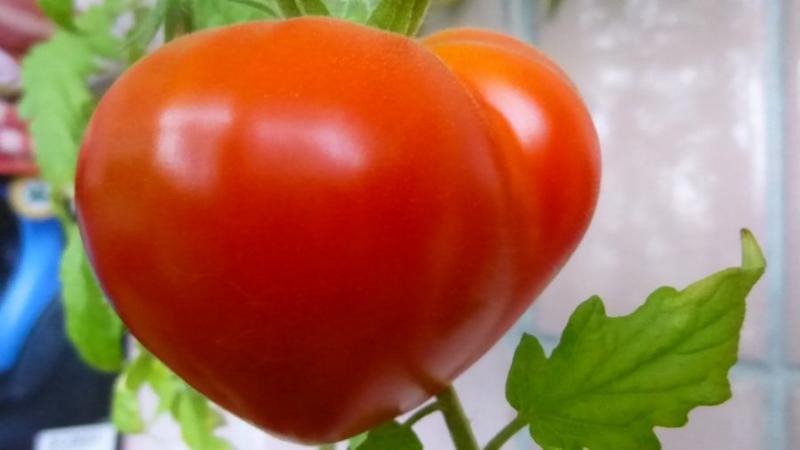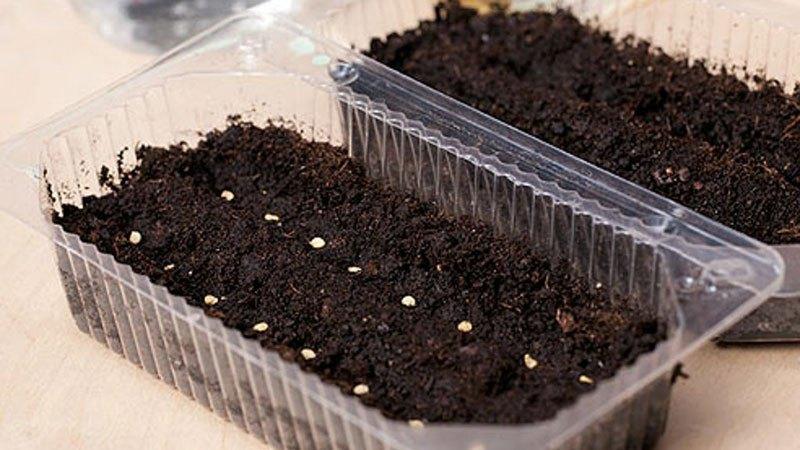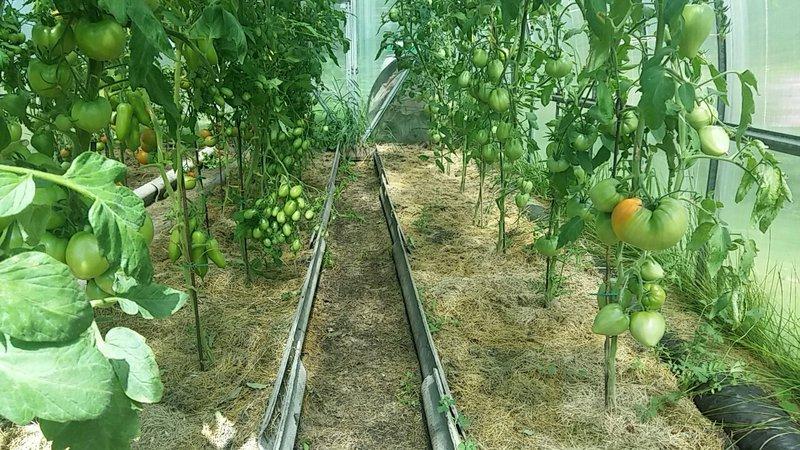Tomato "Budenovka" that gives a bountiful harvest of delicious tomatoes - we grow it ourselves on the site or in the greenhouse
The agricultural sector is not standing still. New varieties and hybrids of vegetable crops appear abroad and in Russia. Breeders strive to achieve the best possible properties and diversify vegetables as much as possible so that gardeners can experiment and enjoy a variety of crops.
Budenovka tomatoes have long been widely known in horticultural circles. These are hybrid tomatoes. A hybrid is an organism or cell that was obtained as a result of crossing genetically different forms to obtain new properties. Budenovka tomatoes have high agrotechnical and taste qualities. Let's consider them in detail.
The content of the article
Description and characteristics of the variety
The Budenovka variety belongs to tall tomatoes, the stem reaches a height of 3-4 meters, the growth of the plant does not stop for a long time, so the bushes are pinched. The stems are long and slender and require a garter and support. Leaves are formed a little, they have a dark green color characteristic of tomatoes and a rough surface.
Variety Budenovka refers to early ripening, the fruits ripen 110 days after planting the seeds. Productivity from 1 tomato bush is about 5-7 kg.
Budenovka tomatoes grow both in the greenhouse and in the open field. The variety is unpretentious, gives a good harvest even in a rainy summer, and is resistant to diseases.
Fruit characteristics
Ripe fruits of Budenovka tomatoes are red or pink in color with a scarlet tint, in shape they resemble the Red Army headdress Budenovka, hence the name of the hybrid.
Tomatoes grow large (300 g), have a dense peel, thanks to which they do not crack and stored for a long time... The pulp is sweet, juicy, with a slight sourness.
Due to their pleasant taste and dense pulp, Budenovka tomatoes are suitable for fresh consumption, and for preparation and salting.
The photo below shows a Budenovka tomato.

How to grow seedlings
Let's study in detail the rules for growing seedlings.
Seed preparation
Gardeners buy seeds for planting in a specialized store or grow them on their own.
In the second case, at the end of the season, remove the largest and ripe fruit from the bush, separate the pulp with seeds and place it in a glass container with water. Place the container in a warm place. When the seeds float after a week, place them on a clean cloth and dry. Place the seeds in a sealed glass container for storage.
Sowing seeds for seedlings
Sowing seeds of Tomato Budenovka for seedlings is carried out in March-April, depending on local climatic characteristics.
Before sowing seeds, preparatory treatment is carried out. Gardeners use this trick to test seeds for quality: they pour the seeds into a 1.5% solution of table salt, while the quality seeds will settle to the bottom.
Next, the seeds are placed in a weak potassium permanganate solution for disinfection. Then it is recommended to hold the seeds in the growth stimulator for some time (according to the instructions on the stimulator packaging).
The photo below shows an option for planting seeds in a plastic container.

Capacity and soil
Take wooden boxes or plastic containers, pour soil into them.To save time and for better results, use ready-made primer, which is sold in a specialized store. It is recommended to place sand and pebbles on the bottom of the box as drainage.
Sowing
The seeds are placed in the soil to a depth of 0.5-1.5 cm, the distance between the seeds is 15 mm. If the seedlings grow close to each other, they are transplanted into separate containers.
Growing seedlings
After sowing, the boxes are covered with foil and placed in a warm place. When the seedlings sprout, the film is removed.
Important... It is recommended to remove the film from the boxes gradually, first for a short time, then permanently, so that the seedlings are hardened before planting in a permanent place.
During the growth of seedlings, complex fertilizers (Agricola, Fertika, Lux) are applied to the soil every 2 weeks. Seedlings are not watered, but irrigated with a spray bottle. For irrigation use warm water, it is recommended to spray once a week.
The seedlings are grown in a sunny, warm place, for example, on a windowsill. When the first brushes appear on the bushes, the seedlings are planted. However, you should be guided by the weather: make sure that the heat is established and the temperature does not drop below +10 degrees.
How to grow tomatoes
So, it's time to plant your plants in an open ground or greenhouse. Follow the guidelines below to get a good harvest
Landing
When planting seedlings in a permanent place, it is important to do this on time so that the plants do not die or get sick.
Seedlings are planted in open ground only when there is no frost at night, the time depends on the region and climate, for example, in the southern regions of the country, seedlings are planted in April.
The soil for tomatoes is prepared in spring. The site for planting is dug up together with humus or compost. Gardeners advise planting the Budenovka variety where zucchini, parsley, carrots previously grew, since the soil after these crops is fertile. Such plants are called siderates, they provide a crop rotation of tomatoes and allow not to change the place for planting tomatoes every year.
Note... Siderata are plants that are planted on plots of a vegetable garden, which will later be planted with another crop. Siderata produce dense greens that are dug into the soil. Greens saturates the soil in the selected area with nitrogen, humus, reduces the growth of weeds, and prevents the spread of diseases.
Greens are used as mulch. Mulch is plant organic matter: the stems, leaves of plants, which are spread on the soil to enrich it with humus. The mulch cover provides the soil layer with the necessary supply of beneficial microorganisms. In the process of decomposition of such a layer, the mineralization of nutrients is accelerated and the efficiency of their assimilation by plants increases.
In the selected area or in the greenhouse, the soil is dug up, loosened, holes are made, in each of which compost and ash are placed. The holes are dug out at a distance of 30 cm from each other. A gap of 50 cm is made between the rows.
Pour water into each well. After the water has been absorbed, place a seedling bush in each hole. The bush should be lowered to the first leaves, sprinkle the soil on top. It is recommended to put straw on the soil, which will retain moisture around the bush.
Stick a peg near each bush, to which you tie the plant as it grows.
Care
The Budenovka variety is unpretentious in care. Water the tomatoes follows 2 times a week, at the root. Feed with fertilizers - once every two weeks. After transplantation, fertilizers are used not for seedlings, but for tomatoes containing nitrogen, phosphorus, potassium. It is better to use ready-made fertilizer mixtures.
It is recommended to mold Budenovka bushes into one stem, so the fruits will be larger. In early August, the plant is pinched so that the bush stops growing upward, and forms more fruitful branches. Tear off the lower leaves as the bushes grow to improve photosynthesis. For the Budenovka variety, pinching is mandatory, that is, the removal of processes from the leaf axils. Gardeners recommend pruning lateral roots so that the root system develops better.
Also, gardeners recommend lightly tapping on the tomato stem during flowering, thereby helping pollination. Flowers that did not have time ovary the end of the flowering season, it is best to remove.
Features of cultivation and possible difficulties
As mentioned above, the Budenovka variety is unpretentious in care, the only difficulties that a gardener has is the preservation of the stems. The stems of the cultivar are long and thin and break easily under the weight of the fruit. To avoid this, it is recommended to carefully tie the bush to the supports and remove unnecessary parts in a timely manner.
Diseases and pests
The Budenovsky variety is resistant to pests and has good immunity to the main diseases of tomatoes. However, for prevention, it is recommended to spray the bushes with a solution of garlic juice several times a season.
Note... To combat insects such as bear, wireworm, caterpillars, it is recommended to use special chemicals: "Thunder", "Match", "Proclaim" and others.
The nuances of growing in open ground and in a greenhouse
Planting seeds and growing seedlings for the soil and for the greenhouse do not differ. When choosing a place for growing tomatoes, take into account the climatic features of the region and the condition of the soil for planting.
In landing conditions on open ground it is easier to maintain the correct crop rotation, it is enough to plant tomatoes in the area where cucumbers, zucchini, carrots or dill previously grew.
In a greenhouse with a crop rotation, things are more complicated. Gardeners give these recommendations:
- Prepare the soil based on garden soil, peat, manure, sawdust (ratio 2: 1: 1: 1), pour with a solution of potassium permanganate for disinfection.
- Remove the top soil layer (20 cm) in the greenhouse. fill up the prepared soil instead of the removed soil.
- Two months before planting tomatoes, sow early maturing greenhouse crops, for example, mustard, legumes, into the greenhouse. Before planting tomatoes, dig them up with the soil.
The photo below shows tomatoes in a greenhouse and outdoors.


Harvesting and application of the crop
Variety Budenovka productive in terms of yield. Gardeners collect 6-9 kg of fruits from one bush. The peel of the tomatoes is dense, so the tomatoes are well stored and ripen when removed.
The variety is suitable for industrial cultivation, the fruits tolerate transportation well over long distances. Tomatoes are suitable for salads, soups, sauces and fresh consumption.
Advantages and disadvantages of the variety
Let's highlight the following advantages of the variety:
- The fruits are large, tasty, versatile in use, the fruit yield is high.
- Bushes do not require special care, agricultural technology is standard for tomatoes.
- The variety is resistant to pests and disease.
- Tomatoes are versatile, they grow well both in the greenhouse and in the open field.
- Plants are unpretentious, do not require labor-intensive processing and time-consuming.
The disadvantages include fragility of the stem and strong branching, but with the correct garter and pinching, this problem can be easily solved.
Reviews
The Budenovka variety has almost no negative reviews. Summer residents speak of it as a universal variety that combines a lot of positive characteristics.
Ivanova Ekaterina, 55 years old, Astrakhan
“This year, on the advice of a neighbor, I planted Budenovka for the first time. The tomatoes were a pleasant surprise, there was little trouble, and the harvest was large, I really liked the taste. So far I've only planted small plots for testing, next year I will plant larger plots. "
Sakharov Konstantin, 67 years old, Volgograd
“I have been planting this variety from the very beginning of gardening, always attracted by its unpretentiousness. The harvest has never failed. The whole family loves these tomatoes, we eat with pleasure.The only thing is that the stems are very thin and brittle, you need to carefully tie it up, it takes time. But the result is worth it. "
Karavaeva Valentina, 63 years old, Krasnodar region
“We have been growing this particular variety in the garden for many years, because we are very satisfied with it. We advise you to try it, and you like the taste, and there is not much trouble. We salt and preserve small tomatoes, and eat large ones fresh or make adjika. "
Conclusion
It is not for nothing that the Budenovka tomato variety is so popular, and summer residents share its seeds among themselves. It fully corresponds to its description and reviews of gardeners. This is a recognized, time-tested variety. It grows almost by itself, does not require a lot of time and effort. The yield is consistently high, the tomatoes are delicious. You can safely rely on this variety.